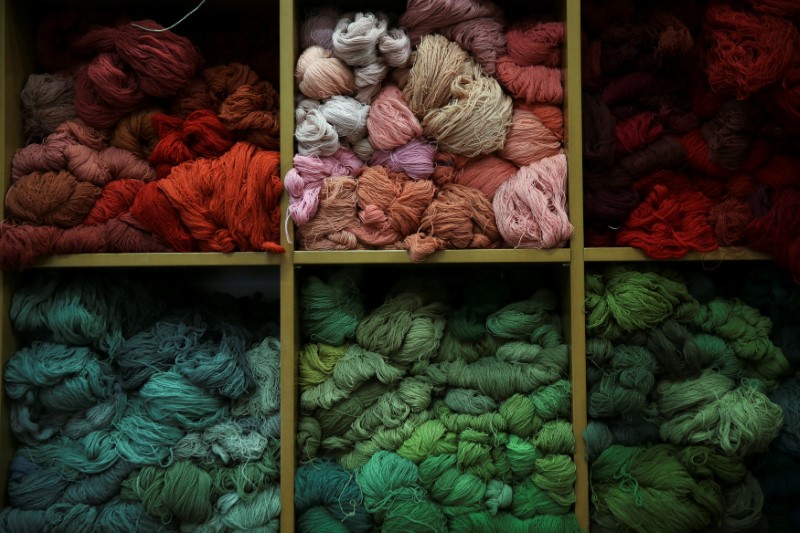By Amanda Calvo
MADRID (Reuters) – A centuries-old tapestry factory in Spain has come back from the brink of bankruptcy after an injection of public money, a debt restructuring plan and its biggest order in 200 years – a German commission for dozens of tapestries.
The turnaround of the 296-year-old Royal Tapestry Factory in Madrid is a rare bright spot for Spanish companies facing insolvency. Nearly 50,000 businesses have entered administration since the start of the country’s economic downturn in 2008.
The market for hand-woven tapestries and rugs plummeted during Spain’s financial crisis, with key clients like the government crippled by spending cuts.
Just one square meter costs thousands of euros and months of skilled work to weave, depending on the amount of silk, wool and gold and silver thread used in a process that has barely changed since the 18th century.
From shelves of wool to workers weaving by hand and a designer working on a pattern, a Reuters photographic essay captures the process at http://reut.rs/2dmwfav.
Twenty years ago the factory changed status from private business to foundation in the hope of preserving the craft. But years of losses pushed it close to going into administration last year.
“It was now or never,” said Maria Pardo, a Madrid city council official who announced, together with the regional government and the Ministry of Culture, an increase in annual subsidies to 1.5 million euros ($1.7 million) next year from 900,000 euros this year. Prior to 2015, the factory barely received any public money.
The cash enabled the factory, which restores historical pieces as well as taking on new orders, to cover delayed salary payments. A restructuring of bank debt and a focus on international sales have also helped turn around the business.
The revived company, which holds a priceless collection of tapestry templates by Spanish artists such as Francisco de Goya, has increased staff this year to 60 from 36 to deal with new orders.
The German regional government of Saxony has recently commissioned 32 tapestries, the factory’s biggest order in the last two centuries.
Long-standing staff went unpaid for months last year while the factory’s future hung in the balance.
“We struggled a lot. I own my home but there were people who had mortgages and they suffered even more,” said Jose Antonio Carbajal, 59, pushing down the silk threads of a soaring 21 square meter (69 square foot) tapestry of the 1982 Sabra and Shatila massacre in Beirut commissioned by a Lebanese client.
It is expected to take three years to complete.
For now Carbajal, who has worked at the factory for over four decades, remains hopeful that his job is secure, alongside dozens of staff painstakingly working yarn in a hundred-year-old listed red brick building in the center of Madrid.
“I was told this industry wouldn’t last beyond tomorrow,” said Carbajal who is hoping to retire soon. “It’s been 43 years and I’m still here.”
(Reporting by Amanda Calvo; Editing by Sonya Dowsett/Jeremy Gaunt)
Copyright 2016 Thomson Reuters. Click for Restrictions.



